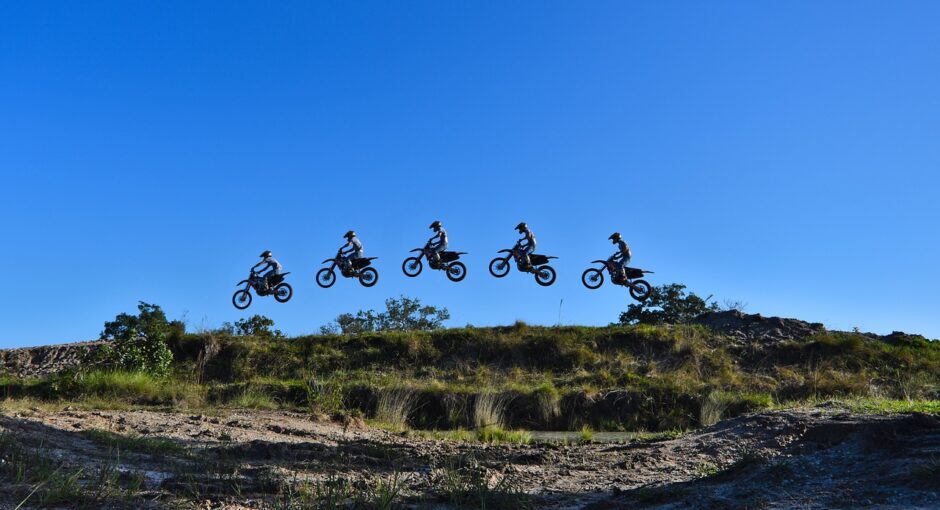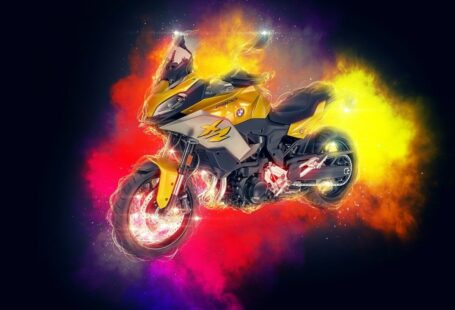The KTM dominated the test scores at Glen Helen and followed that up with another victory at the desert test track. The bike has had some very recent updates with a new fork and axle in 2014 and a revised cylinder and swingarm in 2015. It is the only non-linkage rear end, which does give dad fewer parts to service.
The Austrian bike got very high marks for its motor’s power. Even in a shootout with a “cheater” four-stroke, the KTM stood out in the power category with an engine that put out tons of smooth, fast, yet controllable power that pulled from bottom to top and with good throttle response. Several testers remarked that the bike felt especially fast charging out of corners. Other comments said it had the best over-rev in the test. Riders liked the hydraulic clutch and unanimously praised the transmission for being smooth and easy to shift.
There were a couple of comments that the KTM’s suspension was too stiff, with one rider blaming the fork while praising the shock. Most of the testers felt the action was outstanding (there were several notes that it was the best suspension in the test) with a balanced ride that worked well to smooth out both the small chop and bigger bumps.
The orange bike’s chassis was fun to ride and some testers said it had a good, solid feel, yet there were complaints about headshake. Riders felt the bike cornered well, though one guy mentioned the back end didn’t track great on entrances and then wanted to push out in corners (this rider still rated it first on the day he mentioned this). Most comments were that the bike laid over well, settled into turns nicely, and the suspension remained balanced throughout. Riders like the brakes’ feel and power. On first jumping onto the bike, the KTM felt tall to our testers; the KTM also seemed narrow—so call it tall, not big. One rider wrote that the slim bike was hard to get a grip on.
The biggest setup change most riders liked was to lower both ends by raising the fork in the clamps to the second or third line (first line is stock) and going from stock 100mm of sag to 105 to 110mm. This made the bike more comfortable but also helped the chassis corner better. Riders looking for plushness went four to eight clicks softer on fork compression and four to six softer on shock compression.
First Runner Up: Honda CRF150R
The Honda is the only four-stroke in the group, and the mini riders were excited to ride it. It was different, it was powerful, and it managed a second overall on both days. The bike that came out in 2007 was given an update in 2012 with a new head, cam, piston, and carb and revised suspension valving. It still stands alone in the mini-thumper racebike category.
The 150R puts out strong, smooth, and usable power, and the Honda has enough of a torque advantage over the 85s that riders were using the clutch much less coming out of corners. As broad and strong as the power was, most testers also pointed to the bike’s lack of top-end compared to the strong screamers in the test. The riders loved the smooth transmission, and some commented how the engine “didn’t lose a lot of power” when shifting.
Most of the criticism of the Honda was directed at its suspension. Some riders got along great with the fork and shock action, but several felt the bike kicked. Most of the issue was felt on high-speed chop or in braking bumps. The symptoms were hard to trace, as some riders felt the fork was too stiff; others blamed the shock. As the “moderators” for this test, we can tell you that this points to an overall lack of balance in the bike, which may in part be due to the added weight and different inertia of the four-stroke package, which affects handling in ways our kid testers had trouble articulating.
The heaviest bike in the pack didn’t suffer from the extra weight; the Honda was easy to ride and cornered great. Many commented the bike was well balanced in the turns. The CRF felt planted and was stable at speed, though a few notes called the red machine wide feeling at the shrouds. The riders found this machine to be fun to ride.
The Honda was the hardest bike for our two-stroke-oriented testers to start, and the tip was to give just a little, steady crack of throttle as the riders kicked. The four-stroke was starting easier after two days of riding. To alleviate the suspension kicking, riders went a quarter- to half-turn stiffer on fork compression and a quarter-turn stiffer on shock compression. One of the bigger, faster riders also liked a half-turn slower on fork rebound and a quarter-turn slower on shock rebound.
Second Runner Up: Yamaha YZ85
The YZ package has been around since 2002, but the bike got a clutch and transmission update in 2014 and then a new cylinder, bodywork, and clutch lever in 2015. The Yamaha is the only two-stroke that does not have a power valve, which shows up in less-broad power.
The Yamaha’s engine lost points for its weak low-end, but once into the power the blue bike pulled hard. The Yamaha needed more clutch to get up in the revs and more shifting to stay in the mid and top-end, but many comments said the bike was tuned perfectly there, though a few found a slight bog down low. Riders were split on the shifting; many found it smooth, some complained it wasn’t, and one said he had to let off the gas to shift. A few riders remarked the power delivery of the YZ was abrupt, one using the dreaded “like a light switch” metaphor.



